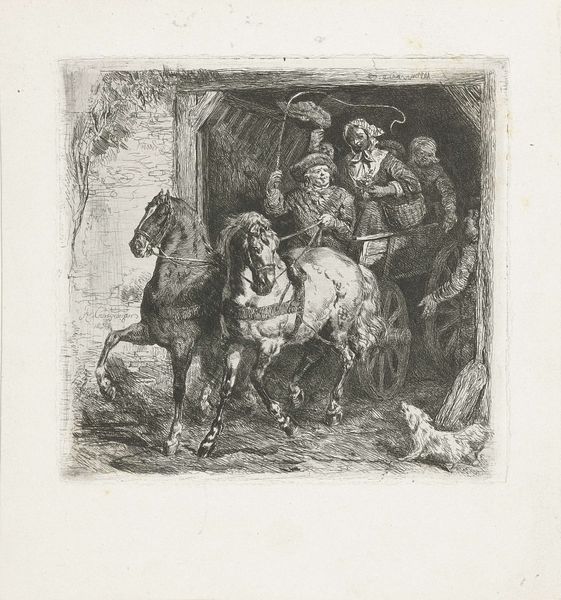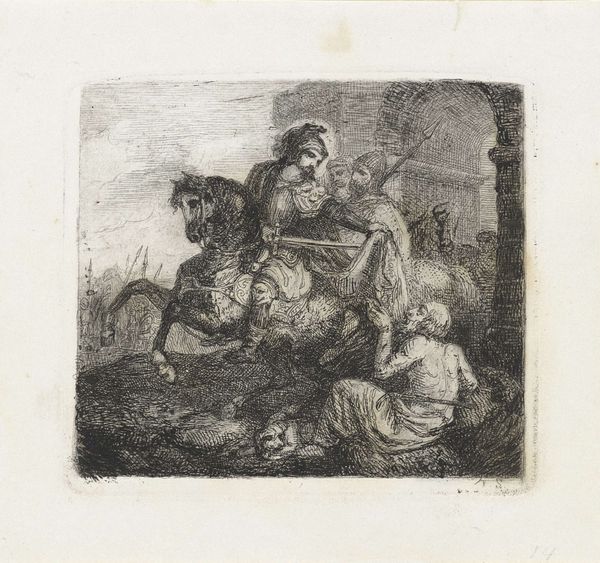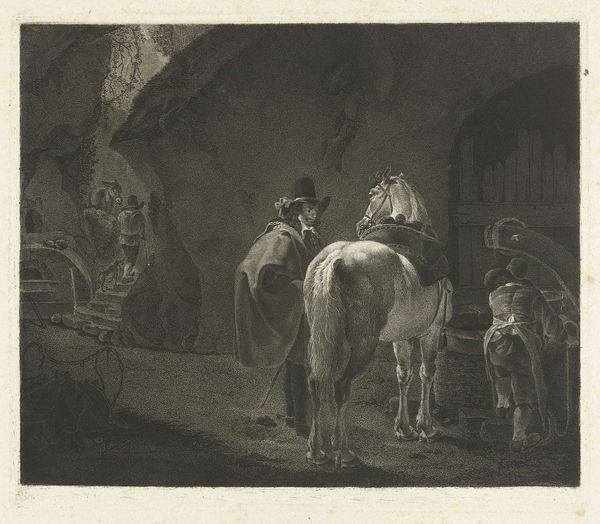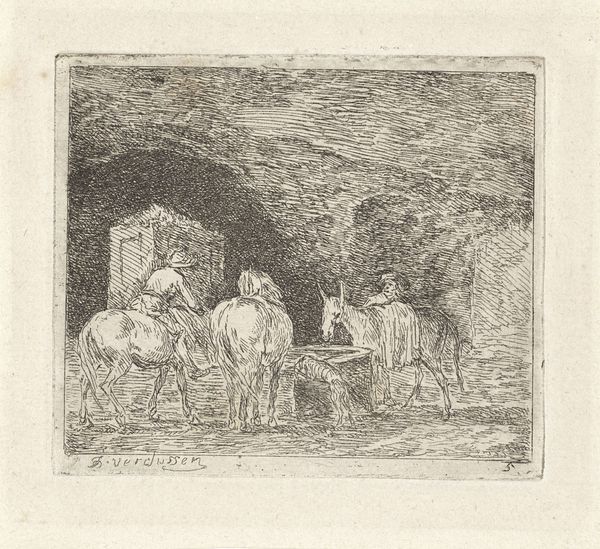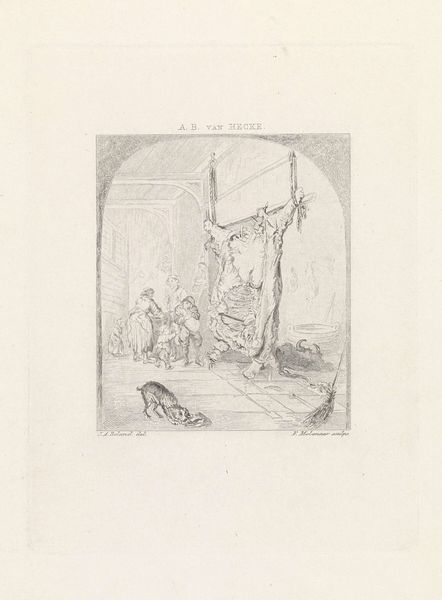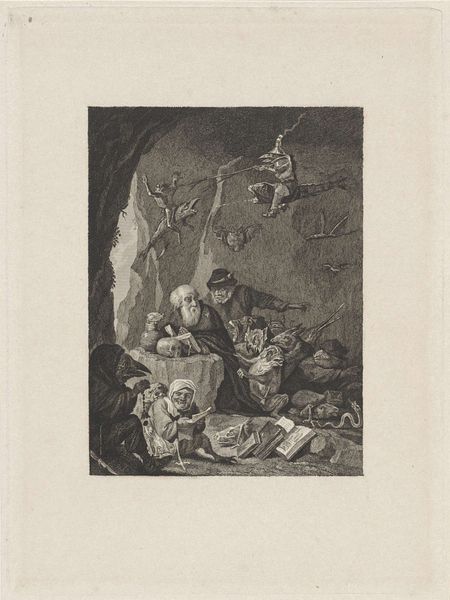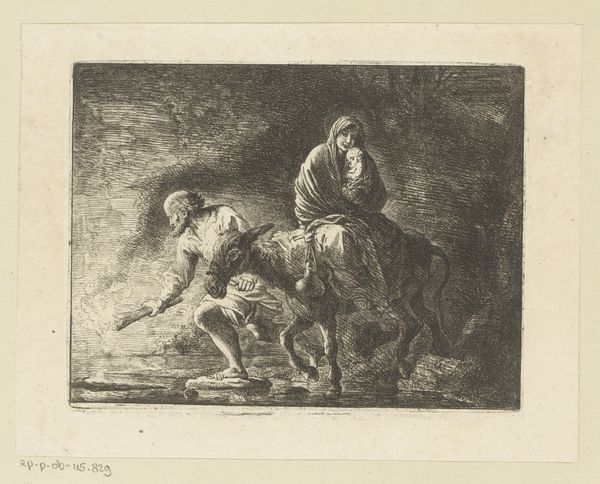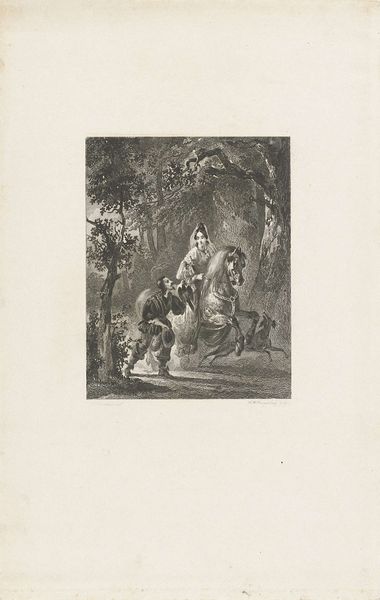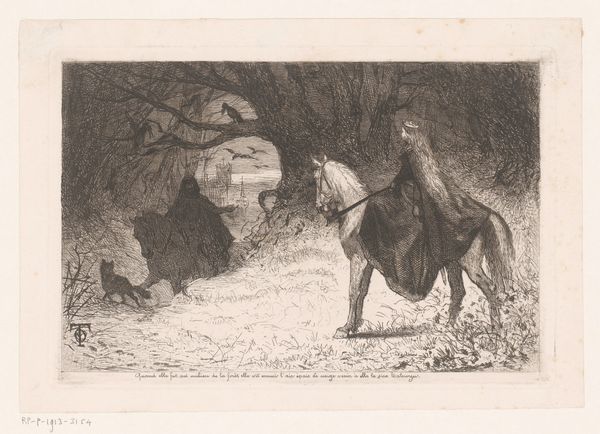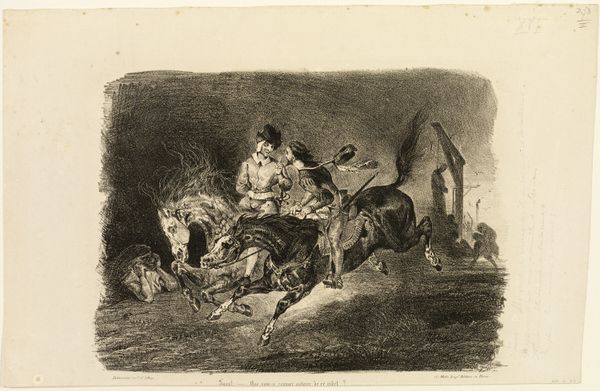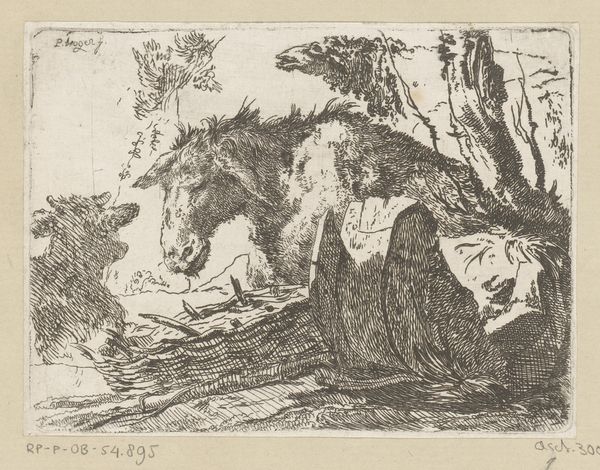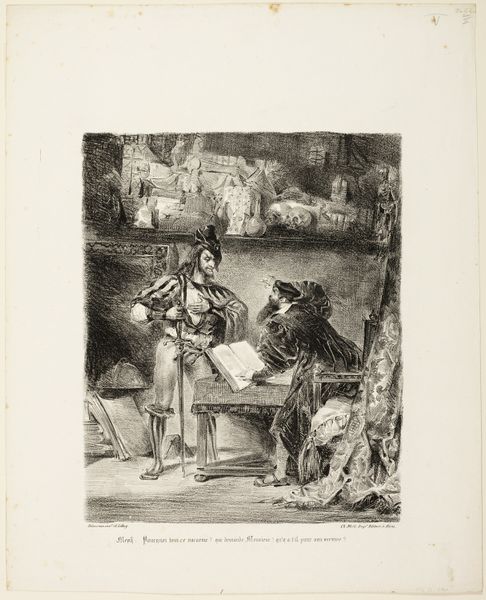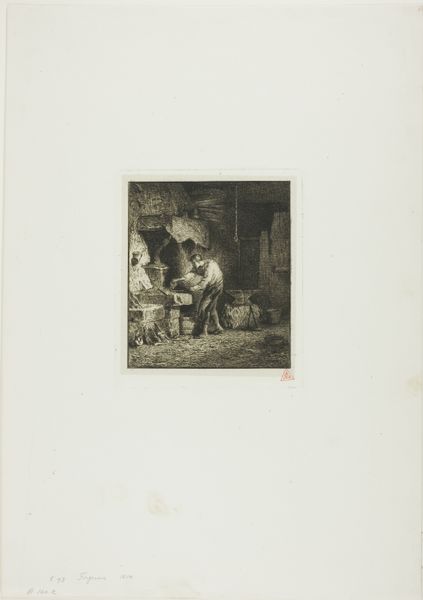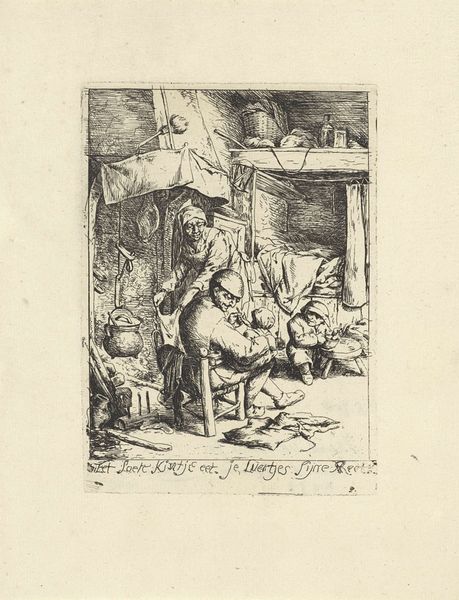
print, etching
# print
#
etching
#
landscape
#
genre-painting
#
realism
Dimensions: width 160 mm, height 152 mm
Copyright: Rijks Museum: Open Domain
Curator: Here we have Reinier Craeyvanger’s "Uitrijdende wagen met boeren," which translates to "Outgoing wagon with farmers," created as an etching in 1834 and now residing here at the Rijksmuseum. Editor: My initial impression? It’s bursting with narrative energy despite the limited tonal range of the print. The diagonal pull of the horses and wagon creates dynamic movement right off the page. Curator: Indeed. Note how Craeyvanger captures a specific moment—the transition from stillness to action. The farmers within, along with the excited dog, anticipate departure, reflecting agrarian life and transit. Etchings like this democratized art; making genre scenes accessible to broader audiences beyond the elite who commissioned painted works. Editor: Precisely. Consider the artist's process. The fine lines and cross-hatching used to create tone, must have been carefully plotted, in terms of mark-making creating not just depth, but texture and light with the starkest of contrast to convey depth. It also highlights how the central, brighter horses become a focal point with those choices of tone and dark. Curator: The wagon itself speaks volumes, suggesting communal activity, and possibly even a journey towards market, which creates implied commentary about a community dynamic in trade relations of this era. I feel that it suggests their social connection to commerce in Dutch society, that feels like a through-line still today. Editor: But consider too, that visual hierarchy—the dominance of the horses in the composition suggests their essential role. Even how one horse is facing back to the structure seems as if hesitant for travel. This could even act as commentary on change or a time of transit from traditional living to perhaps life with trading at market as the central point of the work. Curator: The realism captures the era faithfully but could imply transition during those times in history and change as an emotional underpinning to the image itself. It's quite compelling and layered work, after further investigation and dialog. Editor: It makes me want to delve deeper into other prints made during the rise of industry. Craeyvanger’s composition pushes the limits for symbolic meaning. The etching feels more and more substantial.
Comments
No comments
Be the first to comment and join the conversation on the ultimate creative platform.
